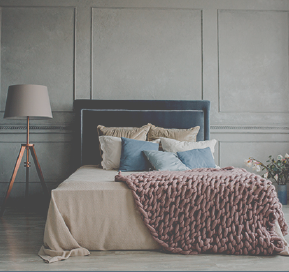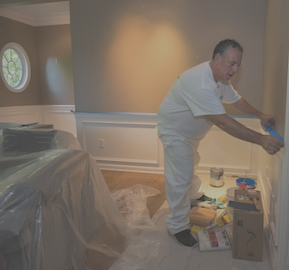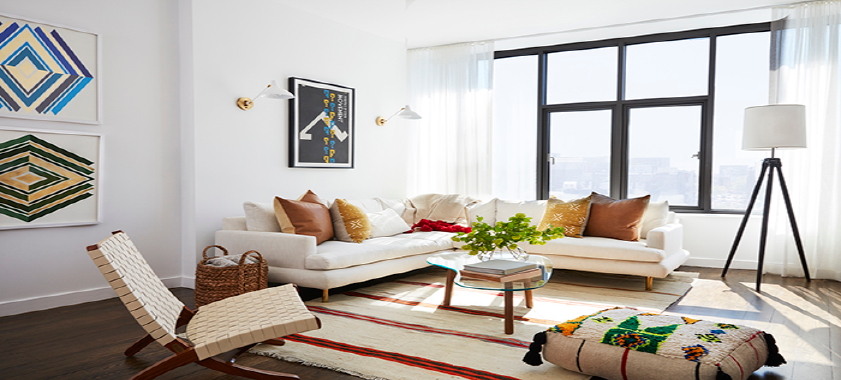Painting Plaster Walls
Painting plaster walls requires more time and effort than is required for painting other types of surfaces. Follow the steps below for professional results you’ll want to show off to everyone.
Prepping Your Walls
Prepare your room by removing wall decorations and window treatments and putting canvas drop cloths over your floor and any soft furnishings. It would be best if you also placed painter’s tape around the edges of your doors, windows, floor trim, ceiling, and anything else that’s not being painted.
If your walls are newly plastered, you’ll first need to sand it smooth. Fresh plaster may have a rough surface, which, if left untreated, will affect the paint finish. Lightly rub the plaster with fine-grit sandpaper and a brush to ensure a smooth surface ready for high-quality painting. When you’ve finished sanding, dust will be everywhere. Wipe down the walls with a cloth damp enough to remove any sandpaper dust.
Sealing the Plaster
Fresh plaster is more absorbent than when painting old plaster and needs to be sealed before painting to minimize paint absorption and provide a uniform paint finish. A common way to seal plaster is with a plaster sealant. Alternatively, you can use watered-down paint made from four parts paint to one part water.
Before applying your sealant, be sure to check your plaster is completely dry. Sealing plaster while it’s still wet can cause mold growth and efflorescence. When applying sealant, use a paintbrush for edges and hard-to-reach surfaces and a roller for larger areas.
Be sure to brush immediately, roller, or wipe out any drips to avoid a bad finish later. If the plaster doesn’t soak up the paint quickly, add more water to the paint, up to a maximum of one part paint to one part water.
Painting Plaster
When the sealant is completely dry, apply your top coat and leave to dry as per the manufacturer’s instructions. Avoid using the same paintbrush or roller that you used to apply your sealant. Using a fresh brush or roller will help you to achieve a uniform paint finish. Once the first coat is dry, apply a second coat, if required.
When the paint is nearly dry, slowly pull the tape off at a 90-degree angle to avoid damaging the paint. If the paint starts to pull off with the tape, score along the tape edge with a razor blade or hold a hairdryer on low heat a few inches away from the tape. This should loosen the tape, allowing for easier removal.
Ready to paint your plaster walls? You can also have Paintzen’s professional painters complete the job for you!
NEED A LITTLE MORE INSPIRATION?





